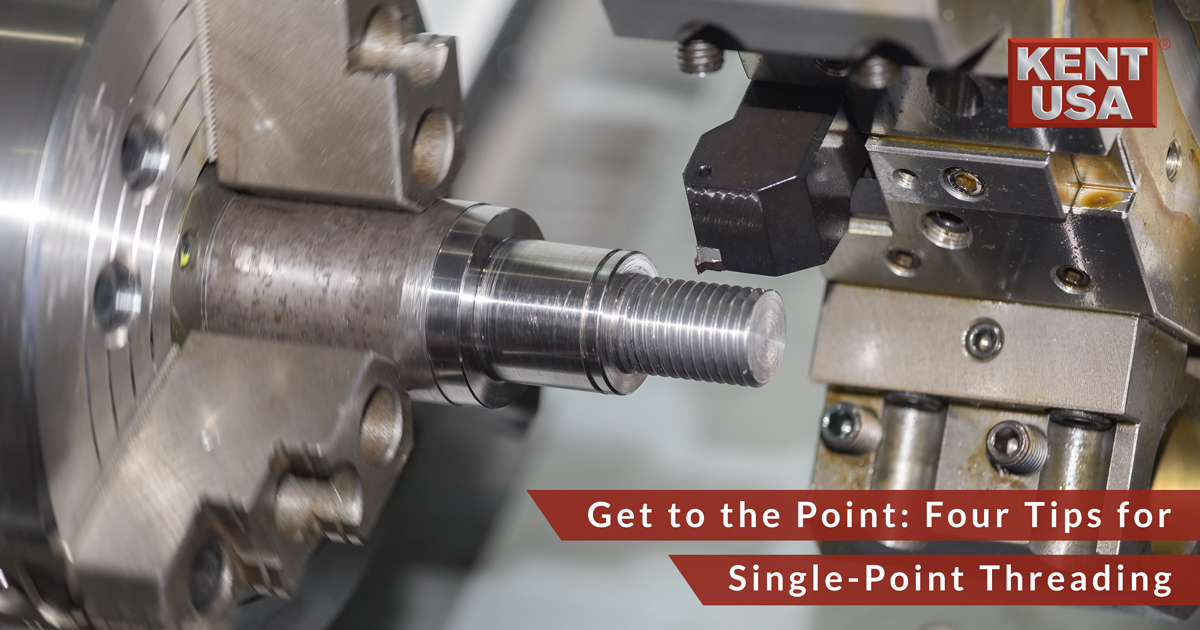Get to the Point: Four Tips for Single-Point Threading
Single-point threading is among the more challenging of all turning operations. Cutting pressures are high, tool life often poor, and the line between a good part and one bound for the scrap bin is thinner than most machinists like. This is especially true on a manual machine. Whether tool room lathe or engine lathe, engaging the half-nut at precisely the right time requires excellent reflexes and nerves of steel, as just one small mistake can spell disaster. Worse, the timing must be perfect perhaps a dozen times in a row for a typical thread.
KENT USA knows this, which is why their manual lathes are equipped with a range of features to make single-point thread cutting easier. The RML-1440 (V) and RML-1640 (V) models of manual precision lathes, for example, have a universal gearbox that supports both inch and metric threading without the need to change gears. There’s also an infinitely variable AC spindle drive and digital RPM display that makes finding the optimal cutting speed about as difficult as pouring a cup of coffee.
All the machines in KENT USA’s Precision Lathe Series have an adjustable safety clutch that disengages the feed when overloaded. There’s an integrated work light and clearly-marked, quick-change inch/metric cover on the cross slide to make machine operation easier. And if you do mis-time the half-nut and bump into the part shoulder, the lathe’s full-length safety brake will keep a bad day from getting even worse.
The “precision” part helps as well. With induction-hardened and precision-ground gears and way surfaces, accurate threads are that much easier to attain. Just be sure to follow these basic threading guidelines, whatever lathe you’re using:
- Rotate the compound rest to one-half that of the thread’s included angle, or just a smidge under (this means 29 to 30 degrees on a standard 60-degree thread).
- Infeed each successive past using the compound rest for all but the final pass, which should be made with the cross-slide. A thou’ or two should do it.
- Use an indexable carbide threading insert, as this makes it much easier to pick up where you left off if you need to change tools in the middle of a thread (you’re not still using brazed carbide, are you?)
- For tough materials, you might want to brush on a little cutting oil for added lubricity, at least on the last pass or two.
That’s all it takes. Of course, single-pointing on a manual lathe will always be a little nerve-wracking, no matter how high-quality the machine, but unless you’re ready to step up to one of Kent USA’s CSM “half-CNC” lathe machines or even a KLR-series 2-axis production lathe, these tips should make the process a bit easier.
Share this article:


